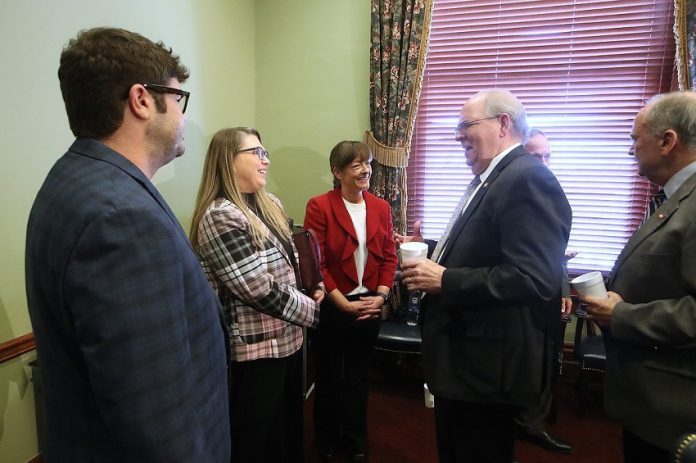LITTLE ROCK, Ark. — A group representing local residents and advocacy organizations voiced strong opposition to the Arkansas state government’s plan to build a 3,000-bed prison in Franklin County. Speaking at the Arkansas Capitol on Tuesday, members of the Franklin County and River Valley Coalition raised concerns about the location, projected costs, and the lack of transparency surrounding the proposal.
In October 2024, Governor Sarah Huckabee Sanders announced the purchase of 815 acres of land in Franklin County for $2.95 million, with plans to construct a new prison in response to overcrowding in the state’s correctional facilities. The governor framed the move as a solution to end the “catch and release” system that has been criticized for its handling of inmates.
However, the announcement has been met with skepticism and resistance, particularly from those in Franklin County, where local opposition has grown in recent months.
Leah Acoach, a member of the Franklin County and River Valley Coalition, expressed concerns about the lack of transparency in the decision-making process. She stated that the prison proposal was “a whole state issue” that had not been approached with the honesty or planning that the community deserved.
Natalie Cadena, another member of the coalition, described the state’s actions as dishonest. She highlighted that the prison’s projected final cost could reach as much as $1.5 billion, based on architectural estimates, far higher than initial projections.
The coalition also raised significant objections to the site itself, arguing that its rural location would make it difficult to meet staffing requirements. The proposed site is located farther from a state highway than prison standards typically call for, and the group pointed out that the local population would not be able to support the staffing needs of a 3,000-bed facility. They also warned that the new prison could exacerbate existing issues with prison understaffing across the state.
In addition to these concerns, the group urged the state to consider alternative solutions, such as investing in programs aimed at reducing recidivism, like drug courts, or expanding existing county jails, which they argued would be a more cost-effective approach.

